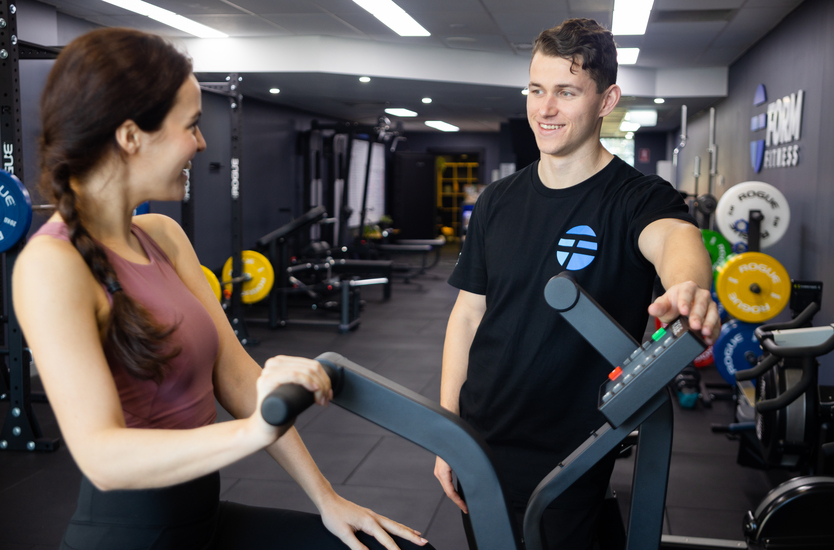Goal setting is one of the most important things to do if you want to get fitter, stronger, or healthier. Goals give you direction, accountability, and an incredible sense of achievement once they’re done.
But this is also something that a lot of people get wrong.
In our line of work, we see it all the time – big lofty goals that are never achieved. But on the other hand, we also help people set incredible goals that help them achieve more than they ever thought they could.
So what’s the difference – Are people forgetting to write it down? Do they not want it badly enough? Not sacrificing enough?
Not according to what we see.
People get it wrong because they set a goal without planning how they’ll achieve it.
Goal setting feels really good, and in fact, it can become addictive. But goals are supposed to be achieved. And although the goal setting process feels great, the most important (and most challenging part) comes when you start putting in the work to achieve them. If you make a habit of setting goals then repeatedly falling short, the whole process starts to lose meaning. Not to mention the fact that you will start to doubt your ability to follow through on the things that matter to you. That’s a bad place to find yourself.
So while you don’t need to have everything figured out from the start, when you’re setting a goal you need to take into account what you’re getting yourself into and how you’re going to achieve it.
Success is achieved through consistent action. If you want to start setting goals you actually complete, you have to understand and embrace behaviour change.
Here are some ways you can embrace behaviour change when you’re setting a fitness goal:
1. Set process goals
If you want to be successful, you should focus on achieving the behaviours that are required to reach your goal, not just the end result.
Here’s an example – at Form Fitness, we have a weekly accountability tool called “inches”. These are small specific targets that we set with our clients each week to help them reach their main goal. They include things like tracking their food for the week, workout targets, or movement/“step” targets.
These do a few things.
First, they make sure our clients are doing what’s needed to achieve their goals. If they tick all of these off, there’s a pretty high chance of success.
Second, they make success feel more manageable. It’s easy to feel overwhelmed by a big goal, but these “inches” bring the client’s attention back to what’s immediately in front of them. What can you achieve today or tomorrow to inch closer to success?
Third, they help the client avoid the “perfectionist” mentality that holds a lot of people back. This isn’t a pass or fail situation. If you screw up, you’ve still got 10 more chances this week to hit your goals.
2. Consider the type of person you need to be to achieve it – aka, set an Identity Goal
Identity goals focus on the type of person you want to be, instead of external outcomes or accomplishments. They’re based on your core values, beliefs, and principles, and may require you to develop specific character traits, cultivate healthy habits, or build stronger relationships with others.
For example, if your goal is fat loss…
“I want to be the type of person who exercises regularly” or
“I want to be someone who eats well at least 80% of the time”
These are powerful because they change how we see ourselves. Success is not just about reaching a specific outcome but also about adopting the mindset and habits that align with these goals.
So ask yourself, “Who do I need to become to achieve this?”
3. Pick your time frame based on what you’re willing to endure
There’s a saying that goes, “we usually overestimate what we can do in the short term, and underestimate what we can do in the long term”.
It’s ok to set huge goals. And almost any goal can be achieved, but time frame matters.
In particular, you need to consider how much discomfort you’re willing to put up with to meet a deadline. This is not glamorous, but it’s a fair point: pick your time frame based on what you’re willing to endure.
Your fitness goals shouldn’t force you to put your life on hold to achieve them, but also, you shouldn’t put your goals on hold because you want to enjoy life.
Be reasonable, but also don’t think in black and white. You can still make progress while maintaining balance and enjoying life. You’ll just have to think honestly and pick a timeline that takes into account the level of commitment you’re able to give at that moment. Space it out if you need to. Go hard if you’re able to. But if in doubt, give yourself a bit more time.
These tips are going to help you avoid the worst goal setting mistake of them all: setting a goal that you won’t achieve. Because if something (goal setting) is worth doing, it’s worth doing well.
You can reach out to us for a personal trainer in Pymble, Lindfield and Lane Cove.






